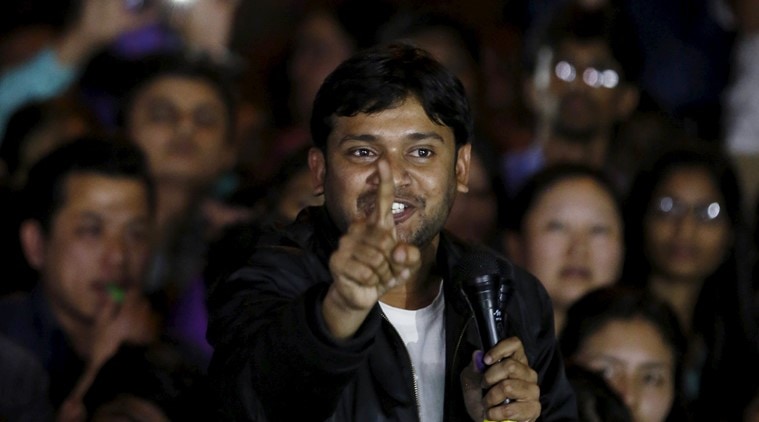Opinion Listen to Kanhaiya
All politicians, take note: This is how the demographic dividend is capable of talking back
 Kanhaiya Kumar, a Jawaharlal Nehru University (JNU) student union leader, gestures as he addresses a meet inside JNU campus in New Delhi, India, March 3, 2016. REUTERS/Adnan Abidi
Kanhaiya Kumar, a Jawaharlal Nehru University (JNU) student union leader, gestures as he addresses a meet inside JNU campus in New Delhi, India, March 3, 2016. REUTERS/Adnan Abidi  Kanhaiya Kumar, a Jawaharlal Nehru University (JNU) student union leader, gestures as he addresses a meet inside JNU campus in New Delhi, India, March 3, 2016. REUTERS/Adnan Abidi
Kanhaiya Kumar, a Jawaharlal Nehru University (JNU) student union leader, gestures as he addresses a meet inside JNU campus in New Delhi, India, March 3, 2016. REUTERS/Adnan Abidi
When Narendra Modi was still Gujarat chief minister, he kicked off his prime ministerial campaign in style with a speech to an audience of students, in February 2013, at the capital’s Shri Ram College of Commerce. Then, his words had seemed to strike an immediate chord amid the young. It was the way he talked about remaking India through su-raj or good governance — there were early intimations in Modi’s SRCC speech of the campaign now officially titled “Make in India”.
But most of all, it was the way he spoke of the need to break from the old politics and to reach out in new ways to the young. “India’s youth has to be viewed differently”, as “new age powers,” he said, as he outlined the challenge for a nation of “mouse-charmers”: To fulfill its destiny through its biggest asset, the “demographic dividend”. Now, three years later, as Kanhaiya Kumar, the JNUSU president arrested on charges of sedition in the Modi regime, holds an audience of students enthralled as he speaks back to the government, after his release from jail, it seems, at the very least, that the powerful and persuasive SRCC script has gone off-key. How else could it be that the same politician who rode to power on a surge of hope and optimism, and the promise of something new, is cast as the old-style authoritarian in the current drama, now showing in JNU?
JNU is not India and Kanhaiya is no representative of the entire youth of the country. But his arrest and its aftermath have confronted the Modi government with a high-visibility moment of pause in which to assess the toll taken by the journey from SRCC to JNU. Kanhaiya’s idealistic insistence on “azadi”, not “from” India, but “in” India, from inequality, corruption and casteism, his defiance of the government’s with-us-against-us “binaries”, his pointed reiteration of his own faith in and commitment to the constitutional framework, and his sharp questioning of the deployment of the colonial law of sedition, make the government look like an ageing bully who is being shown to be out of step. Is this what the government wants to be seen as? Is this confrontation in JNU, this attempt to paint the campus as adversary, to define its missed opportunity vis a vis the young?
It is still not too late. The government must realise that its zeal to sanitise JNU, to bend it to its will, is not having the desired results. In fact, for a regime that has shown itself to be keenly aware of the power of the image and the photo-op, it is taking too much time to acknowledge that it must now cut its losses, retrace its steps from the university. That it should be seen to be ranged, hard-eyed and unyielding, against a young student leader with a way with words and fire in his belly, can only be a lose-lose proposition. For the government, that is.



